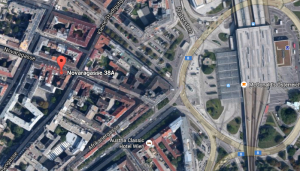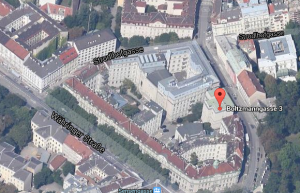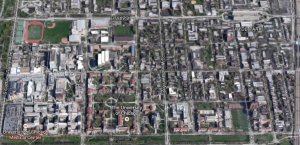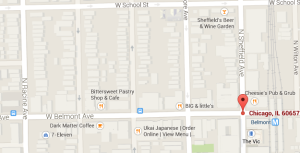Critical Mass, by Sara Paretsky. Signet Select Fiction; Penguin Publishing. Paperback. 2013. $10.
I recently wrote an essay about using Twitter for professional development. I suppose Facebook, if used with due assiduity, might allow a person some degree of learning and education. With Twitter, you get to choose who to follow, and following accounts is fluid. Follow for a few minutes, or follow for years, it doesn’t matter. No one gets upsets (or should) if followers go away. You choose who you follow and for how long. Then, you simply “unfollow.” Facebook, on the other hand, allows for too much intimacy, people hold grudges if “unfriended,” and even strangers feel dismissed if you don’t “friend” them on Facebook.
What does this have to do with a book review? I enter the following graphic into evidence:
I really enjoyed Critical Mass, by Sara Paretsky. I enjoyed the book so much I tweeted Ms. Paretsky my appreciation for her literary effort. And, I got a reply! Short, sweet, to the point – but that is brilliant! In my opinion simply author-audience interactions go a long way towards building and keeping an audience. That simple tweet will encourage me to invest in all of her V.I. Warshawski novels, now.
I picked up the paperback while shopping at CVS. I had noted the book on previous visits but didn’t really know anything about the author. One of the accounts I follow on Twitter had posted a list of the Top 50 Crime Authors. I read through the list and noted a few authors I was already familiar with. I found another list of crime authors, and another, and Sara Paretsky’s name kept showing. She was recognized by the readers of crime fiction; that was a plus in her favor.
The other plus which pushed me into buying Critical Mass was her heroine, V.I. Warshawski, is featured in 17 novels.Critical Mass is only the most recent novel. I’m not a fan of one-shot crime novels. I want to buy into a character. I grew up in the Age of Columbo, the Era of Magnum, P.I. and the Epoch of Spencer for Hire. I want to have a relationship with the character; a one-shot mystery is over-and-done and something about the finality of coming to the end of a story knowing nothing comes after doesn’t sit well with me. Never has. Hardy Boy Mysteries, Nancy Drew, Jupiter Jones and the Three Investigators; heck, even Henry and Rigsby had multiple adventures.
Critical Mass begins in pre-World War Two Vienna, Austria. Women were working on physics research associated with uranium and splitting the atom. Yes, Vienna was a research hub for Germany in working towards a working atomic bomb. Ms. Paretsky uses literary license to fictionalize some locations throughout the book. Many of the fictional places have real world analog, though. Obviously, Vienna, Austria is a real place. The research described in the book takes place at Technische Hochschule für Mädchen which is a literary stand-in for the Institut für Radiumforschung (IRF), which does exist.
In the early days of Germany’s march across Europe, women scientists took part in considerable amounts of research. Few were ever recognized for their efforts, with men receiving the vast majority of recognition of the research and winning the vast majority of Nobel Prizes. This comment can be easily verified by doing some simple research.
During World War Two and immediately thereafter the Allies were afraid of German, Austrian, and Hungarian scientists from continuing work with the Germans, or later, falling into Communist Soviet hands. In order to combat smart people falling under Axis or Communist influence, the United States implemented Operation:Paperclip.
Operation: Paperclip brought many German scientists, some of the best minds in the world at the time, to the United States. Men like Wernher von Braun and Werner Heisenberg, men responsible for the United States atomic bomb program, and later, the space program responsible for landing men on the moon. With less fanfare, some women were also brought to the United States within the same program.
Some of these people lived quiet, normal lives in and around Chicago. The University of Chicago was a hot-bed of atomic research before, during, and after World War Two.
Many of these people knew each other from Germany, and were not friends. Before the war, Jews mixed with relative ease in both German and Austrian society. But with Hitler and his anti-Semitic beliefs, Jews were removed from authority and leadership positions and replaced with Germans. This often meant a lab tech might then become the superior of the scientist. As is often the case, this new power dynamic sets into motion resentment, envy, and a recipe of murder.
Critical Mass is a great crime mystery spanning decades, from growing antisemitism in pre-war German and Austria, to the birth of computers and nuclear power in the United States. Ms. Paretsky really did some heavy research for this novel; very commendable. Furthermore, she visited sites in Vienna, Austria to get a sense of place for the novel. Her writing truly evokes a brilliant grasp of geography and history, perhaps the best reason to read Critical Mass.
All of these events are tied together by a death, a murder, an attempted murder and the disappearance of a teenage boy in today’s Chicago. Another positive for me, as many of readers of my book reviews are aware, is the use of real places in crime fiction. Private Investigator Warshawski calls Chicago home. Conveniently enough, Chicago has its fair share of crime, and it helps to have the University of Chicago nearby, as well as the University of Illinois-College Circle. Readers who know the geography of Chicago, or those who want to know the geography of Chicago better, would be served well to hit Google or Bing Maps. Ms. Paretsky gives us enough details to get familiar with Ms. Warshawski’s neighborhood.
Warshawski must travel outside of Chicago tracking down leads. The geography becomes fictionalized during these trips. I’ve been wondering about the legal aspects of using real places in novels. Generally speaking, using real places is OK as long as nothing but good things are said, or interactions are nothing but positive, or at least neutral. Otherwise, get a good lawyer.
If a place is going to be the scene of a crime or some sort of horrible event, the budding author should shy away from naming names, and fictionalize a place. I suspect those reasons were responsible for the towns of Palfry, Illinois, and Tinney, Illinois. I couldn’t find them on a map. I’m wondering if Palfry might be better known as Rantoul; Tinney better known as Peru, Illinois. But, I’m guessing.
Paretsky weaves an intricate and compelling story, but not needlessly so. As I stated in the tweet above, readers really need to bring their brain to this book. In reading reviews about Sara Paretsky’s other books I think most of her books lean towards the cerebral. The story moves back-and-forth in time as bits and pieces of evidence are revealed. We see a glimpse of life of women in science research in Austria. We are brought forward in time as many of the advances of atomic and nuclear research become part of our society and research today, especially in the form of private industry and the power of intellectual property.
 In the end, without giving much away, V.I. Warshawski must clear up a loose end by visiting Vienna, Austria. Jewish ghettos, the physics research universities, and the German trains to concentration camps can all be found in uncomfortable proximity. In the book’s “Historical Notes” Sara recounts her trip to Vienna to visit the places appearing in her book. She mentions the people interviewed, academics who helped provide some of the important background information on the historical workings of the Austrian universities. When I finished the novel I sort of felt as if I had been subtly educated on the life of a Jewish female involved in research in Nazi Austria. Anyone who has read historical accounts of the Manhattan Project, or Bletchley Park, or the history of the American space program may find portions of the novel familiar.
In the end, without giving much away, V.I. Warshawski must clear up a loose end by visiting Vienna, Austria. Jewish ghettos, the physics research universities, and the German trains to concentration camps can all be found in uncomfortable proximity. In the book’s “Historical Notes” Sara recounts her trip to Vienna to visit the places appearing in her book. She mentions the people interviewed, academics who helped provide some of the important background information on the historical workings of the Austrian universities. When I finished the novel I sort of felt as if I had been subtly educated on the life of a Jewish female involved in research in Nazi Austria. Anyone who has read historical accounts of the Manhattan Project, or Bletchley Park, or the history of the American space program may find portions of the novel familiar.
Critical Mass is not your typical fare for crime novels. The writing is spot-on, the action well-paced, and V.I. for those unfamiliar with her is a great character. V.I. is witty, yet weary of dealing with societies low-lifers. She carries a gun and can take and deal-out punches. Yet, in spite of some of the typical plot devices, Sara Paretsky’s depth of writing, research, and elaborate plotting is well worth the read and sets her stories apart. Make sure to add Critical Mass to your “To-Read” stack.
PAX




